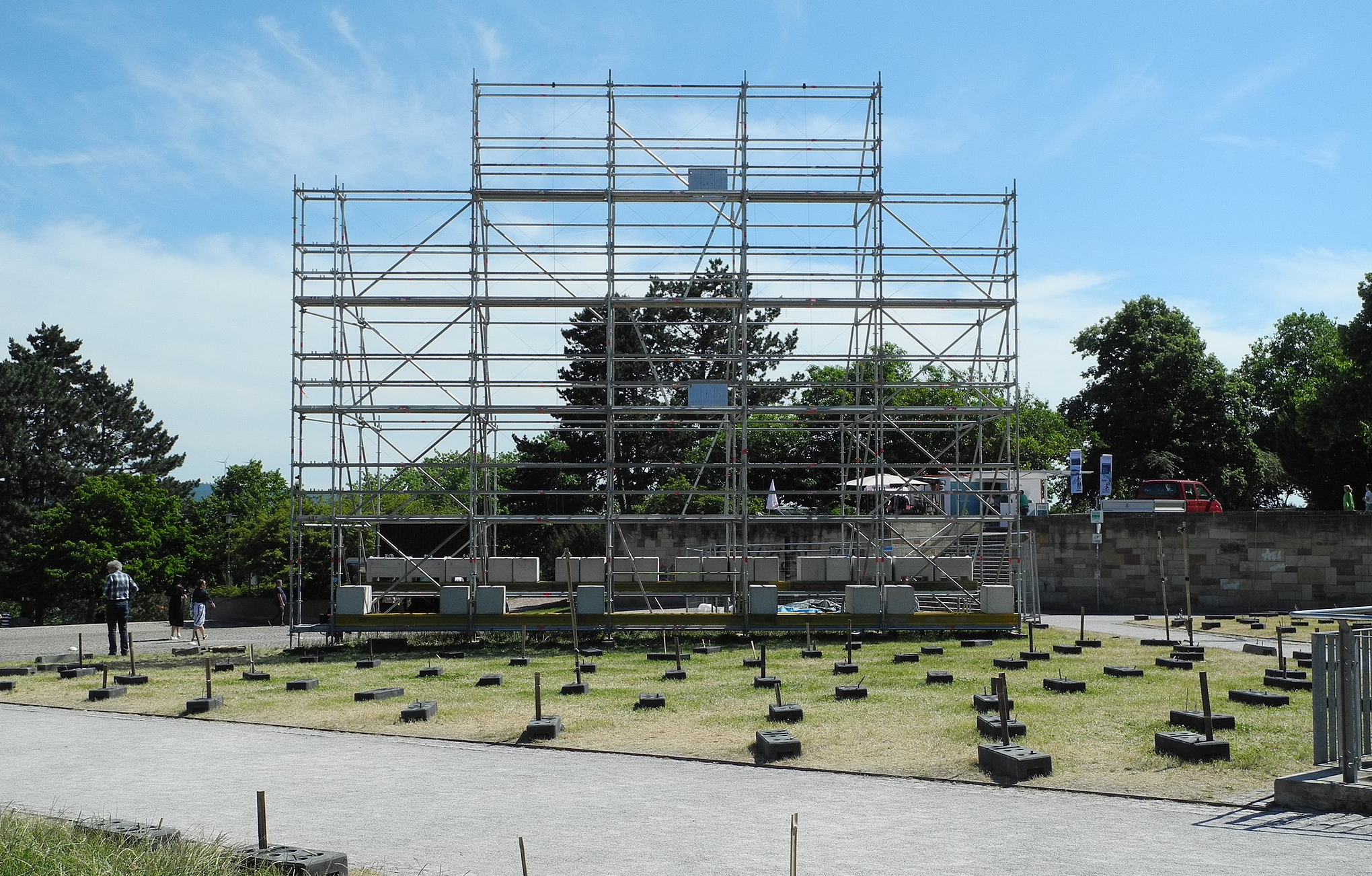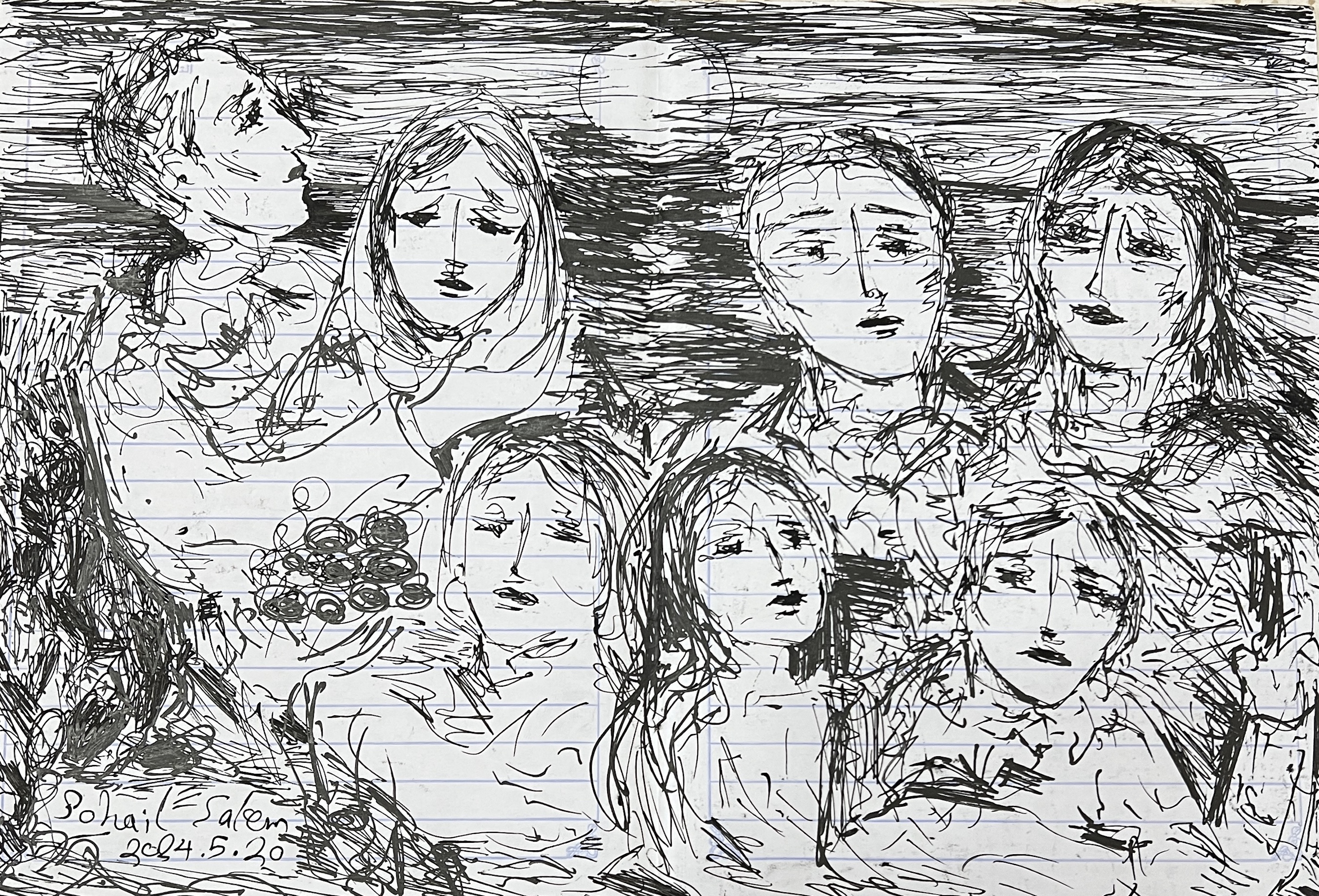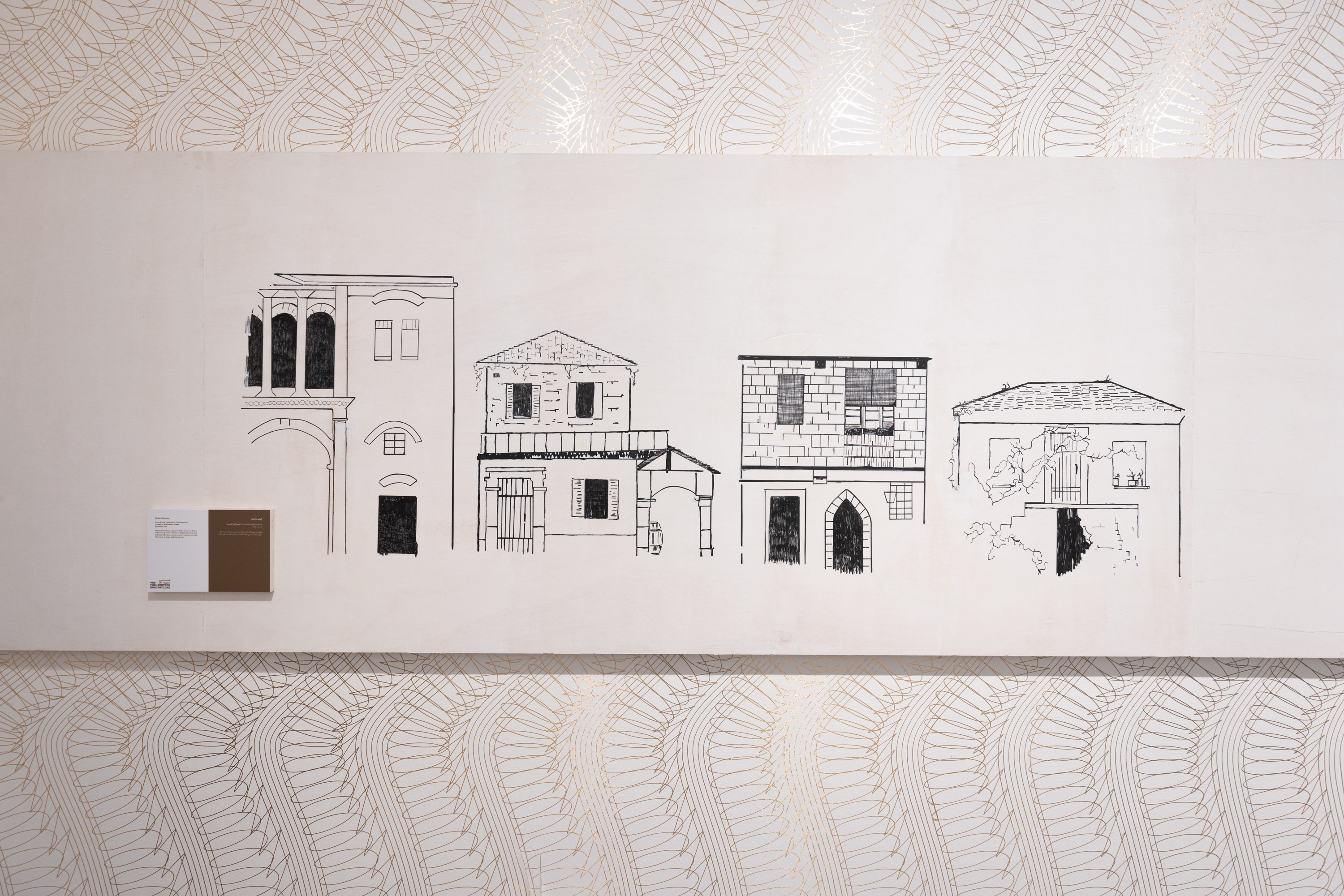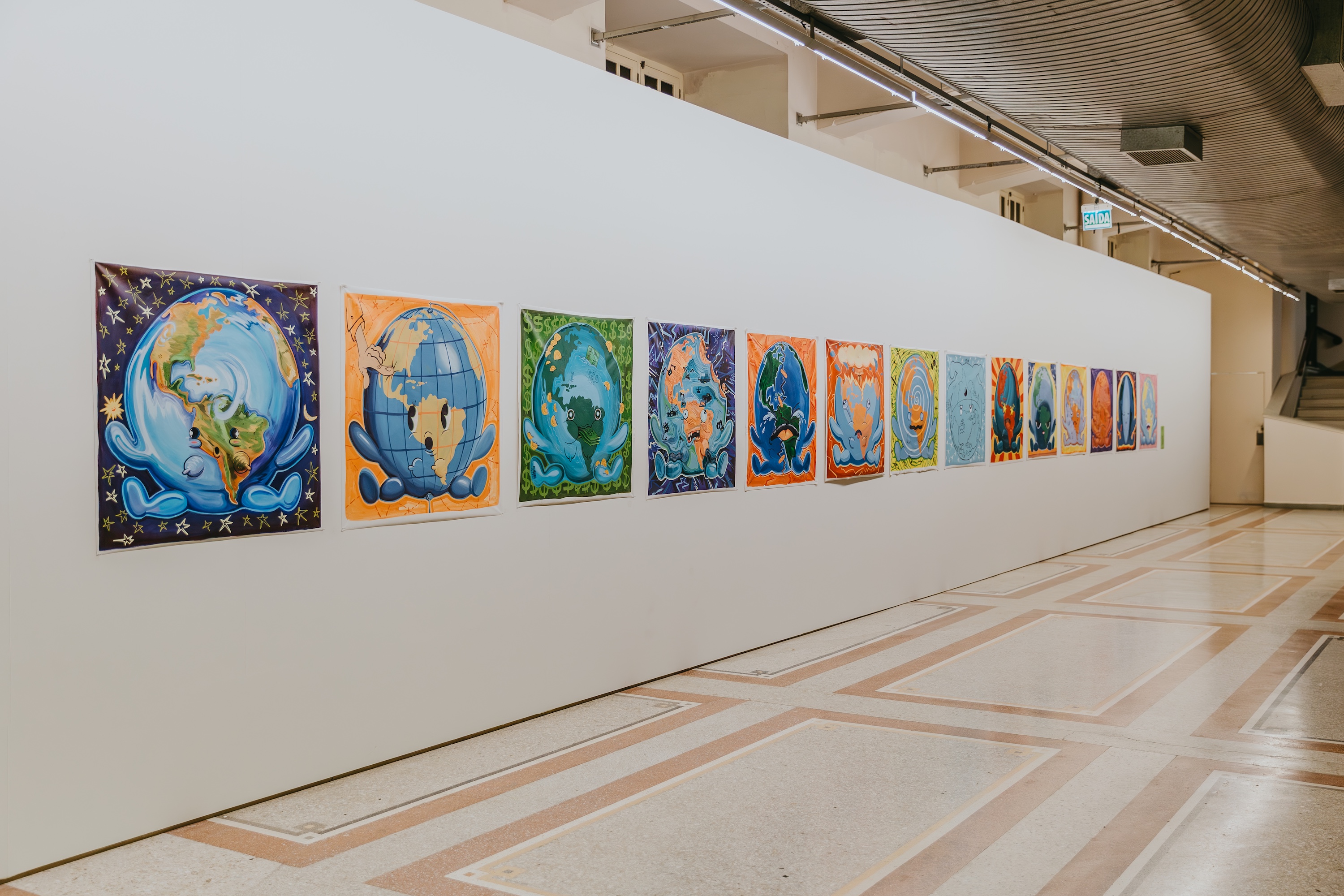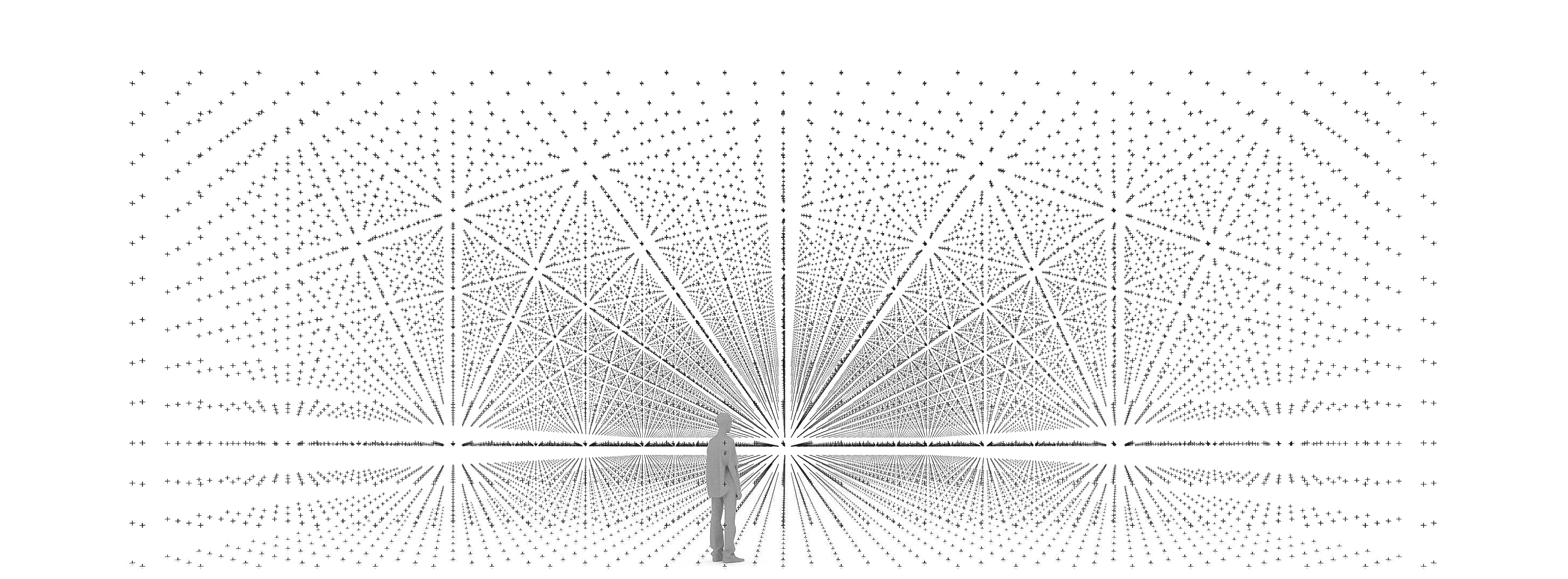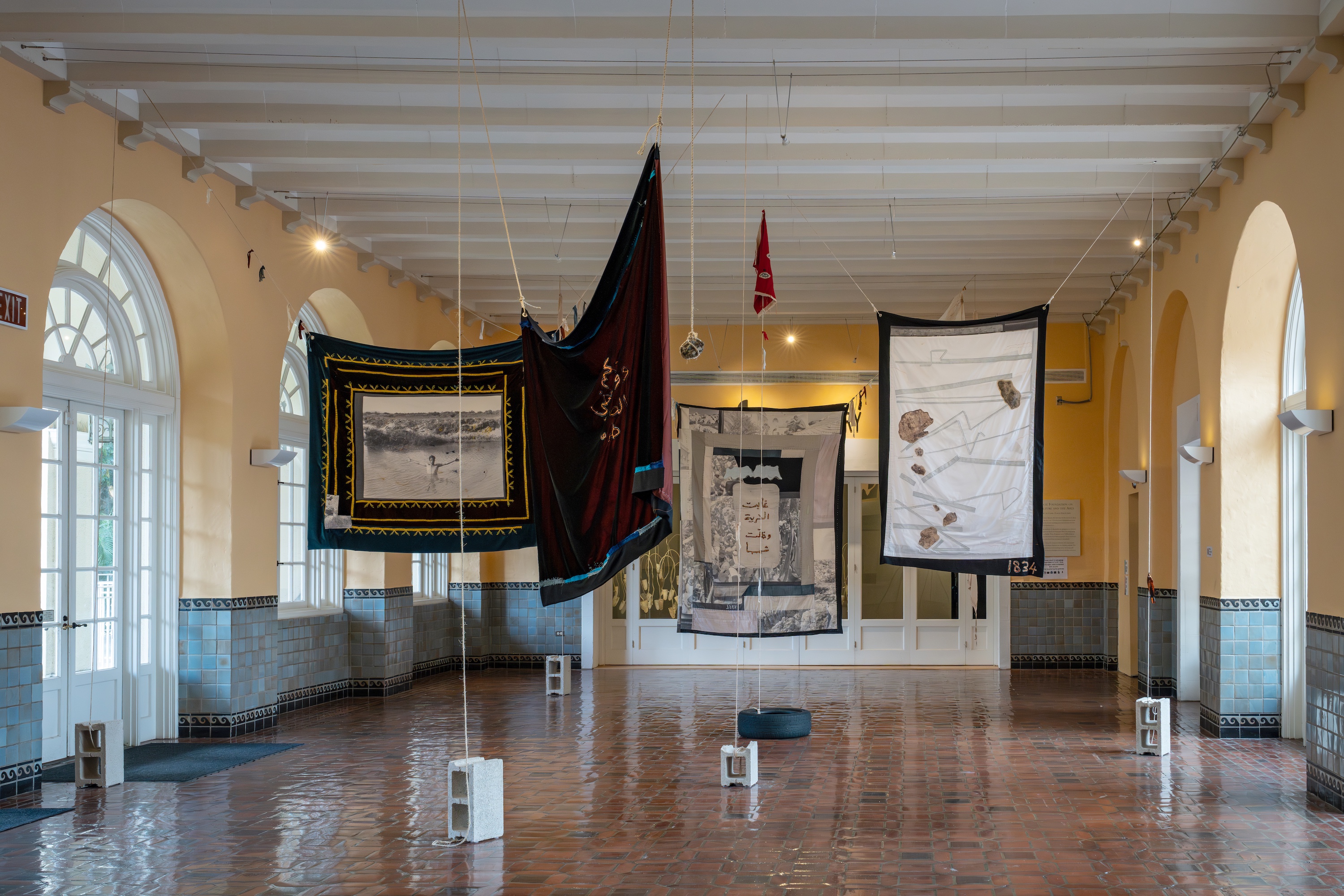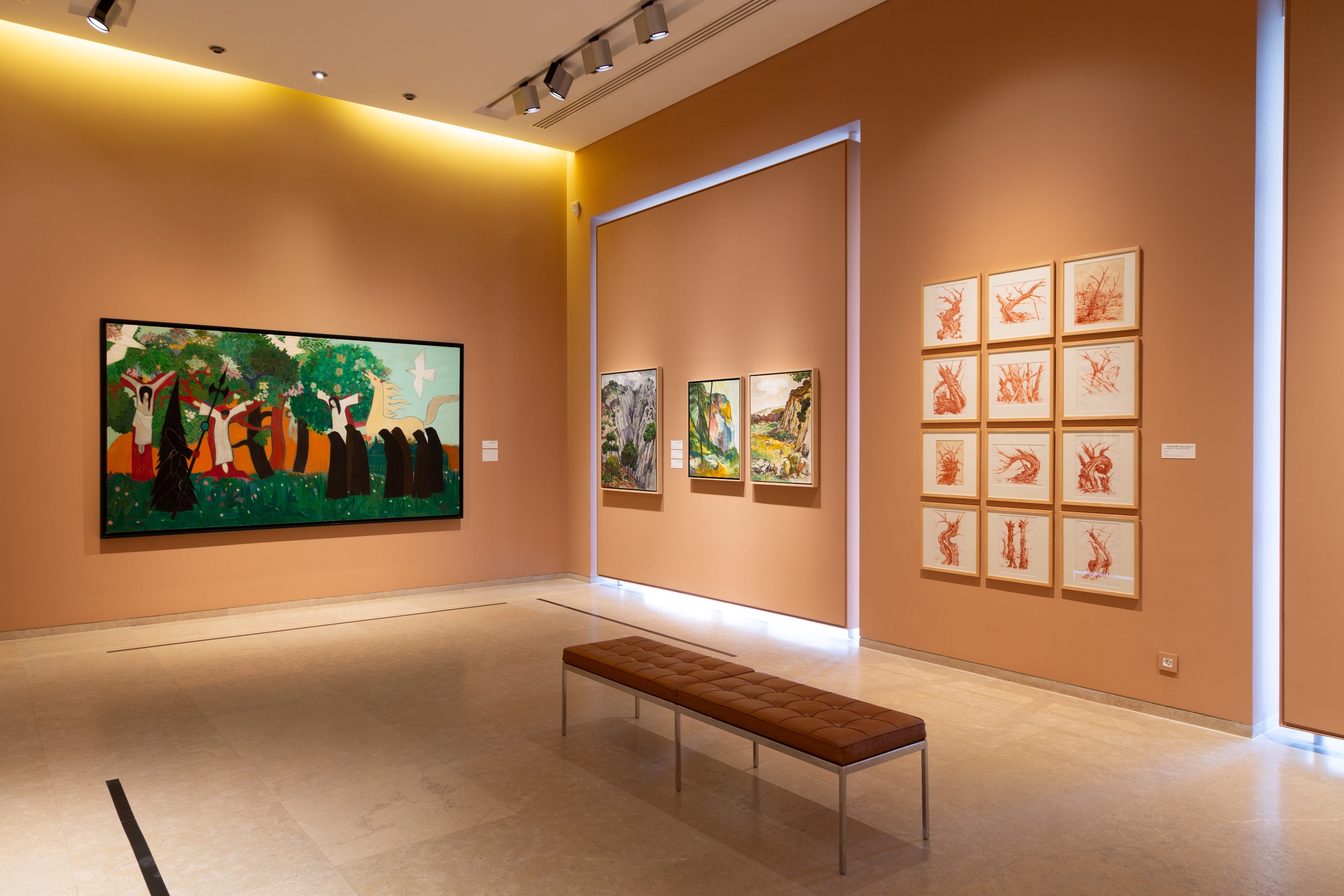In the second of our dispatches from Documenta 15 over the course of its 100 days, Jörg Heiser considers the row over anti-Semitic content that erupted shortly after the exhibition’s opening.
This January, a Kassel-based group called Bündnis gegen Antisemitismus [Alliance Against Anti-Semitism], which prides itself on anti-Muslim racism (“we make no secret of the fact that we take a critical view of Islam”), published a post on its blog.1 The post denounced members of ruangrupa, the Indonesian collective curating this year’s Documenta, as well as members of the exhibition’s Finding Committee and Artistic Team, as anti-Semites, pointing to their support—amongst 16,000 other co-signers—for the May 2021 “Letter against Apartheid.” (I haven’t signed the letter because I disagree with its terminology and some of its demands, but the assumption that everyone who did is automatically an anti-Semite is absurd.) In a newspaper interview in January, German Historian Ulrich Schneider—federal spokesman of the anti-fascist Vereinigung der Verfolgten des Naziregimes [Association of the Persecuted of the Nazi Regime]—described the “alliance” as “concerned with denouncing people who are critical of Israel’s occupation policy. They deliberately use the blanket accusation of anti-Semitism as a killer argument.”2 Nevertheless, a string of newspaper articles across parts of the German press adopted this strategy.
By the end of April, the debate escalated further. In a letter to Germany’s cultural minister Claudia Roth, Josef Schuster, head of the Central Council of Jews in Germany, complained that a series of panel discussions at Documenta addressing questions of anti-Semitism—planned in response to the accusations made—was supposed to include a panel on the question of anti-Muslim and anti-Palestinian racism. Less than a week later, the series, which would have included an array of international scholars (including eminent figures of Holocaust Studies such as Manuela Consonni, Natan Sznaider, and Raphael Gross, among others) was cancelled. ruangrupa issued a letter rejecting the allegations against them and invited artists. “To be clear,” they wrote, “no anti-Semitic statements of any kind have been made in the context of documenta fifteen.”3 In an announcement by Documenta explaining the suspension of the talks, the declared aim was now to “open the exhibition and first let it speak for itself.”4 In May, the exhibition space of the Palestinian collective The Question of Funding—who also had been scrutinized by the “alliance”—was vandalized with graffiti including the number “187,” a reference to the section of the Californian Penal Code that defines the crime of murder. It remains unclear who committed this intrusion, but there is little doubt regarding its threatening nature.
After months of all this I had hoped, like many others (including Meron Mendel, Director of the Anne Frank Educational Centre in Frankfurt, who stated as much in an interview earlier this month with Norddeutscher Rundfunk), that a return to meaningful, nuanced debate would be possible once everyone had had a chance to see the actual exhibition. Indeed, during the opening days this June, curators and artists took to social media to celebrate Documenta’s welcoming vibe: “intense days of curiosity, learning, sharing, wondering,” read one typical message. But then, an epic clusterfuck.
I arrived in Kassel on a Monday afternoon in late June. Snapshots of crass antisemitic caricatures—part of a large outdoor billboard painting by Indonesian artist group Taring Padi centrally erected in front of Documenta-Halle—had just hit social media and the news. Strangely, the large billboard painting, People’s Justice (2002), had not been put up until the evening of the previous Friday, after much of the press and professional preview crowd had left town. (The official reason given was delays caused by shipping and restoration.) On Monday evening, in a climate of shock and outrage, People’s Justice was covered in dark gray cloth, as if to create a minimalist altar to its covered presence. Twenty-four hours later, it was taken down entirely.
The question of how the institution and its guests—Documenta’s General Director Sabine Schormann, ruangrupa, the Finding Committee that commissioned them, the members of Taring Padi, and, last but not least, all the other invited artists—would react set the tone of the days that followed. The works and collaborative endeavors presented across 32 larger and smaller venues deserved to be seen at their own pace and accord, but the questions kept coming back. Would there be more questionable—or even overtly anti-Semitic—work? How well would this Documenta fare in comparison to previous editions, not least with regard to the aim stated on its homepage of “creating a globally oriented, collaborative and interdisciplinary art and culture platform?” And what would it all mean for this big-budget, landmark institution now plunged into crisis?
Many of the works at Documenta address contested histories. The Havana-based Instituto de Artivismo Hannah Arendt (INSTAR), for example, confronted the endless purgatory of suppression and censorship in contemporary Cuba. Atis Rezistans/Ghetto Biennale from Haiti presented sculptural figurines combining metal scraps and what look like actual human skulls—chillingly grotesque reminders that the spirits of the successful Haitian Revolution still await global acknowledgment. A straightforward documentational presentation by Amsterdam’s The Black Archives looked at representations of Black people in early twentieth-century publications, delineating the problem of doing so by covering the N-word on the cover of a music book—but not troubling racist depictions of Black people at a marriage. Archives by definition hold contaminated material; in an exhibition context, the question is how such material is dealt with. In the case of Archives des Luttes des Femmes en Algérie [Archives of Women’s Struggles in Algeria], which came out of the Hirak popular uprising in Algeria, in 2019, and chronicles the struggles towards women’s emancipation and equal rights especially between 1988 and ’93, this becomes apparent with a reproduction of a 1988 booklet about Palestine that depicts—in a faux-naïve woodcut style that would not look out of place in a children’s book—Israeli soldiers as Orc-like monsters capturing an unarmed child with large eyes. This kind of material should be made accessible to allow explorations of the logic and history of propaganda iconography—but obviously not as a lapse that goes unremarked upon, or with unquestioned purpose.
Not passing over such occurrences may feel like a disservice to all the other great works that, as a consequence, inevitably get less press attention. 5 But like anti-Semitic caricatures in a large mural in a public space, such “minor” details cannot be ignored. And while there is no justification at all for the threats experienced by The Question of Funding and their invited artists, the digital print paintings by Mohammed Al Hawajri, from the series “Guernica Gaza” (2010–13), equate the Nazis’ and Italian Fascists’ Condor League with the Israel Defense Forces. What’s more, they repeat the lazy adoption of anti-war agit-prop collage techniques by pasting, for example, van Gogh’s Family of Farmers (1885) in front of news imagery of a burning Gaza building. Again, crass comparisons or disturbingly bad pastiche alone do not constitute a case for removal, but for questioning curatorial choices and contextualizations—or, conversely, non-choices and non-contextualizations.
At the venues in the center of Kassel I, at least, felt that I would encounter the presentations on their own terms. The Hübner-Areal, a former industrial building in the suburban working class district of Bettenhausen, housed a display that resembled a succession of stands in an NGO convention. Trampoline House, who advocate for asylum seekers’ rights in Denmark, were put near a presentation of hand puppets by Fondation Festival sur le Niger from Mali (Wall of Puppets, 2022), followed by Indonesian Jatiwangi art Factory who combine clay bricks and shingles with numerous musical activities geared towards transnational networking of rural communities. At the back of the building, a cinema auditorium had been built for the presentation of Subversive Film from Brussels and Ramallah; a handwritten note at the entrance stated that it was temporarily closed due to technical problems. This came after numerous reports that the “Tokyo Reels” film installation at the Hübner Areal included 1970s footage from numerous filmmakers dealing with Palestinian issues. This footage was collected by Japanese director Masao Adachi, a former member of the Japanese Red Army; in 1972, the organization killed 26 people and injured 80 in a massacre at Lod Airport outside Tel Aviv.
Again, I would not at all rule out screenings of such material—in fact, I would have been curious to see it—but not without appropriate contextualization and reflection. The accompanying leaflets, website, and catalogue didn’t seem to provide any. Instead, on the Documenta homepage, there was talk about “shedding light on the overlooked and still undocumented anti-imperialist solidarity between Japan and Palestine.” Not only does this gloss over the fact that the Japanese Red Army—Maoist terrorists from a former Fascist axis power—had singled out Israel, of all places, as the frontier of their declared aim of world revolution, it fails to make clear that the films themselves would likely not be nuanced documentaries but works of propaganda typical of their time.
A former public indoor pool in Bettenhausen, Hallenbad Ost, had been given over to the work of Taring Padi. A collection of their agit-prop paintings covered the walls inside, and cardboard figurines were placed in the garden in front of the building. A video at the entrance gave an impression of their genuine activist work with, for example, rural farmers under threat by industrial waste, while an introductory text quotes Martin Niemöller’s famous 1946 text “First they came…,” which is featured on the US Holocaust memorial. The visual language, however, is again that of the global anti-imperialist post-sixties left, with local variations: soldiers or business people in the context of the Suharto regime (and after) are routinely depicted as pig-like animals (such dehumanizing is used by certain ideologies to lay the groundwork for atrocities), while the heroes are more like Che Guevaras raising fists.
Preview banquets were held in this space and against the backdrop of these images, as if the anti-Semitism that manifested in People’s Justice had crept in like an uninvited guest. But it’s not that easy to explain it away. In fact, a 2011 catalogue available on Taring Padi’s website includes critical examinations of the group’s anti-imperialist visual language. A writer named Kiswondo remarked: “In general, all works by Taring Padi tend to reproduce the common, normative, and stereotypical messages usually found in the New Order [Suharto’s term for his reign] campaigns. This is especially true in the works depicting the physical and stereotypical attributes of religious, racial, and ethnic diversity. These works do not represent creative messages formulated out of a thorough study about the conflicts. The participating artists in Taring Padi did not delve deeper into the heart of the matter that they have chosen.”6 Such blunt criticism is unusual for a commissioned catalogue essay: it couldn’t be much clearer. And it does the critical job that was missing in Kassel.
This is what it comes down to. German debates around questions of anti-Semitism, especially in relation to questions of decolonization, have gone haywire in recent years. There is a kind of populist-hysteric tendency in parts of the political spectrum—going all the way from hard-left “Anti-Deutsche” to center-right neoliberals to, absurdly, radical right-wing trolls—to wield the accusation of anti-Semitism as a blanket smear whenever someone doesn’t fit a fixed worldview. The accusation happily ignores international voices and nuances, including Jewish and Jewish-Israeli ones, effectively devaluing the allegation where it is appropriate. Significantly, it can also be used to ward off German responsibility for German colonialism.
To shoot oneself in the foot, in an environment such as this, does a tragic disservice to the decolonial struggle for acknowledgement and commemoration, and reveals a certain negligence to probe one’s own blank spots when it becomes ideologically or politically difficult to do so. One could say that German arrogance about its supposed superiority in Vergangenheitsbewältigung (“coming to terms with the past”) becomes a distorted mirror, in Kassel, to a kind of globalist embrace—endorsed by the institution—that tends to palliatively romanticize the ideological pitfalls of the global anti-imperialist left of the twentieth century.
The apology issued by ruangrupa and the artistic team three days after the People’s Justice incident sounded genuine, as did the expressed apology to the Jewish community in Kassel and elsewhere. The one issued by Taring Padi also sounded sincere, while repeating the problematic explanation of the anti-Semitic caricature with reference to the work’s Indonesian context. In the statement by the curators of the Finding Committee (who commissioned ruangrupa), the second sentence made me pause: “We have followed the process of its [Documenta 15’s] development at a distance.”7 Really, at a distance? The Documenta website describes the Finding Committee’s express function: to include from this year’s edition “the function of a documenta Advisory Board. As the documenta commission, the Advisory Board not only appoints the respective Artistic Direction (as was the case with ruangrupa in February 2019), but also accompanies the continuing project process.” Such an accompaniment, distant or not, might have strongly advised ruangrupa that it would be unwise to delegate responsibility for the exhibition to its invited groups; that inviting Jewish Israeli artists would have countered the inevitable impression of a purposeful exclusion; and would have advised against not inviting any artists from Ukraine, or dissident artists from Belarus or Russia. 8 Again, the prevailing impression is of a certain negligence to probe deeper and encompass sometimes jarring perspectives.
The first press release regarding People’s Justice, on June 20, stated that the work “is not meant to be related in any way to anti-Semitism. We are saddened that details in this banner are understood differently from its original purpose,” and Documenta CEO Sabine Schormann was quoted stating: “I would like to explicitly point out once again that the work […] was created in the context of Indonesia’s political protest movement and was shown there, and in other non-European locations. Now is the first time that the work is shown in Germany and in Europe. All parties involved regret that feelings were hurt in this way.”9 In other words, only hurt feelings, and only in Germany… (A day later, Schormann issued another press release in which this time, as opposed to her previous quoted statement, she used the term “anti-Semitic imagery.”10)
The German/Western-European attitude of cultural relativization—encountering the mirror of your own history in the form of globally exported German anti-Semitic caricature tropes, for example, and then describing them as non-European quirks—is deeply linked to an impulse of exoticization, and exculpation. Uncritically embracing non-western cultural practices, especially collective, spiritual ones, can easily become the uncanny sibling to German desires of reconstituting the forever discredited notion of a German national ethnic identity, but in disguise. Those engaged in non-western cultural practices need to be keenly aware of this trap (and I do think many are, but such awareness can easily slip).
A further complicating factor is German cultural institutions’ tendency to present themselves as neutral platforms for global dialogue: this is the—now discredited—founding myth of Documenta. It is more than telling that it wasn’t Documenta’s own archive and team of scholars that first brought up and fully explored the fact that the exhibition’s co-founder Werner Haftmann was a Nazi war criminal, and also prevented Jewish-German artists from being shown, but the Deutsches Historisches Museum in Berlin.11 Hito Steyerl’s video contribution in Kassel—a hilarious piss-take on the cheesy Animal Spirits (2022) that both animate late-digital capitalism and western appropriations of shamanism—pinpoints the problem of western projections. But the lecture that she would have given at the canceled panel series (the text of which was published in Die Zeit) also discusses the blind spots of a German institution that has yet to come to terms with the fact that it was co-founded by a Nazi. Steyerl thus described the spectrum of German projections and blind spots, but also those spots of a postcolonial theory in which “everything needs to be situated and contextualized, unless it takes place in Germany.”12 The polemic is going in a direction that seems apt to the current pitfalls described above, though Steyerl ignores that previous editions of Documenta did include probing references to the local context (think of Forensic Architecture’s investigations of the fascist-terrorist murder of Halit Yozgat in Kassel at Documenta 14 in 2017, for example).
In any case, the idea of Documenta as a blank slate, as a neutral platform for global artistic expression, has ultimately, and terminally, been exposed for what it is: an illusion. The task now is to rebuild some of what Okwui Enwezor started in 2002, and some of which was continued in 2007, 2012, 2017, and also 2022; and to rebuild it in a way that “transparency” and “sustainability” (both stated aims of ruangrupa) are not just catchphrases for collective endeavors, but the guiding principle of a venerable institution still struggling to come to terms with its own past.
“Documenta fifteen: Antizionismus und Antisemitismus im lumbung,” bga-kassel (blog), January 07, 2022, https://bgakasselblog.wordpress.com/2022/06/02/ein-einbruch-und-waghalsige-schlussfolgerungen/; https://bgakasselblog.wordpress.com/2022/01/07/documenta-fifteen-antizionismus-und-antisemitismus-im-lumbung/.
Matthias Lohr, “Nach Kritik an documenta,” HNA, January 23, 2022, https://www.hna.de/kultur/documenta/umstrittene-kritiker-91253810.html.
ruangrupa, “Antisemitism Accusations against documenta: A Scandal about a Rumor,” e-flux Notes, May 7, 2022, https://www.e-flux.com/notes/467337/antisemitism-accusations-against-documenta-a-scandal-about-a-rumor.
“Series of events ‘WE NEED TO TALK! ART – FREEDOM – SOLIDARITY’ suspended,” documenta-fifteen, May 4, 2022, https://documenta-fifteen.de/en/news/series-of-events-we-need-to-talk-art-freedom-solidarity-suspended/.
At Fridericianum, I especially enjoyed the large-format tapestries by Polish-Romani artist Małgorzata Mirga-Tas with their finely crafted twists on exoticizing depictions of Roma life from the seventeenth century (Out of Egypt series, I-V, 2021), and the captivatingly euphoric singing of a Kurdish ensemble from Northern Syria in Hinde Shero of Rojava Film Commune’s video Darén Bi Tené (The Lonely Trees), 2018.
Kiswondo, “The Production of Taring Padi’s Response toward Horizontal Conflicts,” in Taring Padi - Seni Membongkar Tirani, eds. Zen Hae, Lisabona Rahman, Reuben, Annie Sloman, Jade Ella Trapp, and Ardi Yunanto (Yogyakarta: Lumbung Press, 2011), 104, https://www.taringpadi.com/wp-content/uploads/2018/12/Taring-Padi-Seni-Membongkar-Tirani.pdf.
“Documenta Finding Committee on the deinstallation of ‘People’s Justice’ by Taring Padi,” documenta-fifteen, June 23, 2022, https://documenta-fifteen.de/en/press-releases/documenta-finding-committee-on-the-deinstallation-of-peoples-justice-by-taring-padi/.
An informal invitation to Chto Delat from St. Petersburg was apparently extended but then communication was broken off, according to a Facebook statement by the group’s Dmitry Vilensky: “they simply stopped responding to emails, in the usual tradition of ‘busy international curators’.” Dmitry Vilensky, Facebook, June 24, 2022, https://www.facebook.com/dmitry.vilensky/posts/6059270000754457.
“Press information on the concealment of a work by Taring Padi at documenta fifteen,” documenta-fifteen, June 20, 2022, https://documenta-fifteen.de/en/press-releases/press-information-on-the-concealment-of-a-work-by-taring-padi-at-documenta-fifteen/.
“Statement by Dr. Sabine Schormann on the deinstallmeont of the banner ‘People’s Justice’ by Taring Padi,” documenta-fifteen, June 21, 2022, https://documenta-fifteen.de/en/news/statement-by-dr-sabine-schormann-on-the-deinstallment-of-the-banner-peoples-justice-by-taring-padi/.
Hito Steyerl, “Kontext ist König, außer der deutsche,” Zeit Online, June 3, 2022, https://www.zeit.de/kultur/kunst/2022-06/documenta-15-postkoloniale-theorien-kunst-kontextualisierung.
